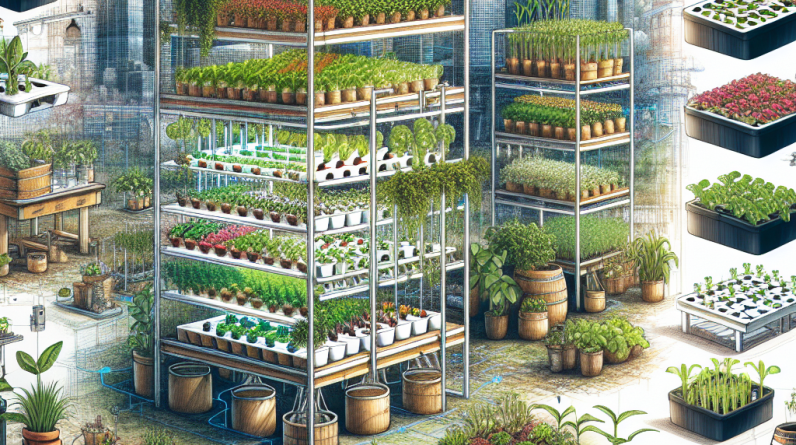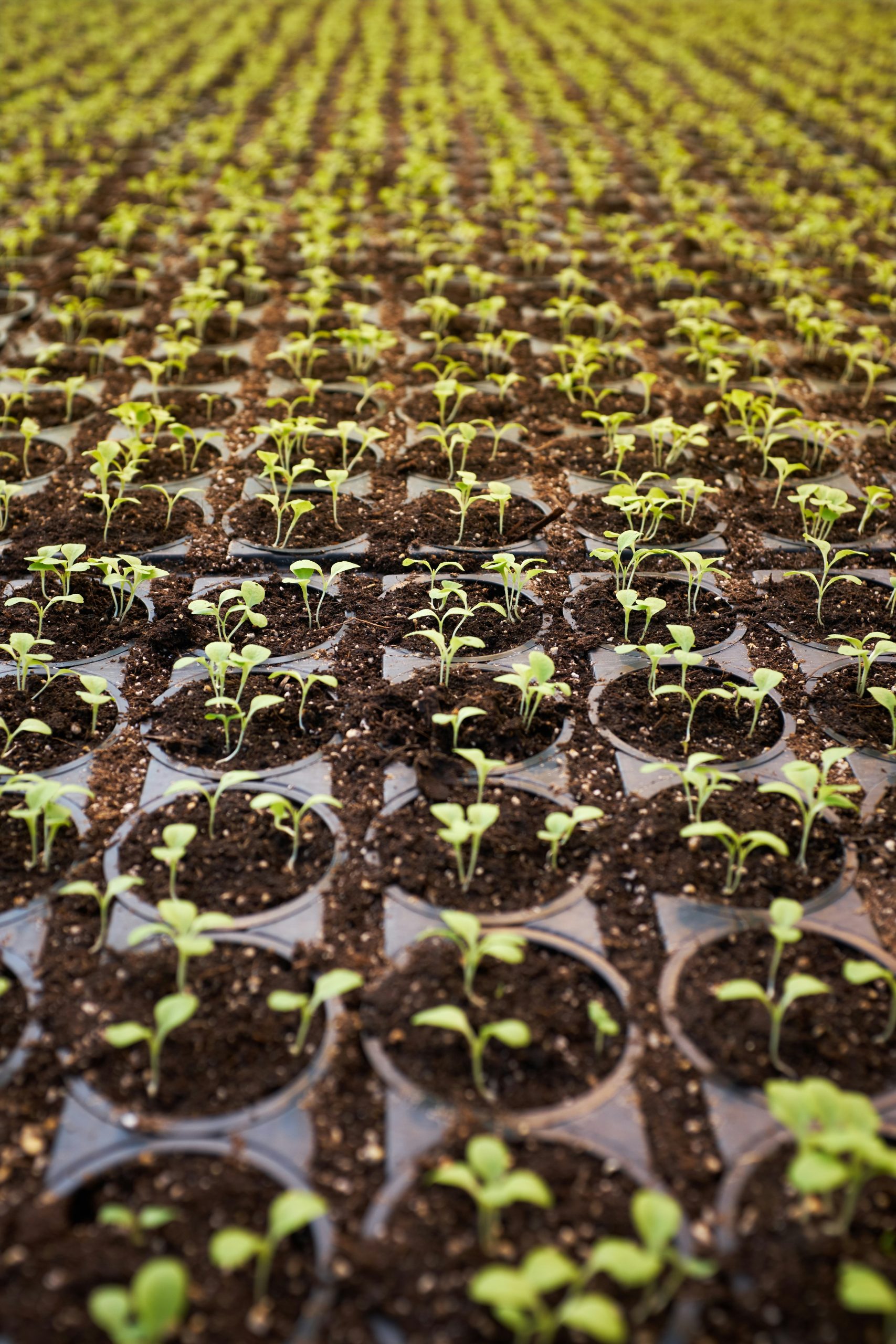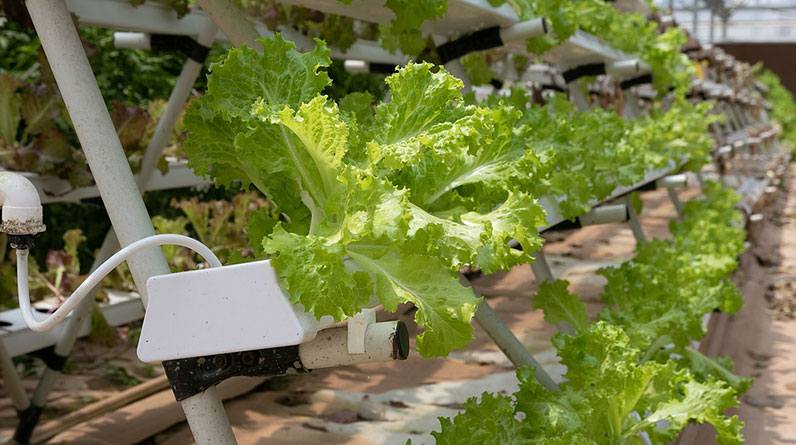
Hey there, fellow plant enthusiasts! If you’re anything like me, you’ve probably dived into the world of hydroponics, excited about growing plants without soil. But let’s talk about a key element that can make or break your hydroponic success: light distribution. Today, I’m going to share some insider tips to ensure those greens are thriving with the best light setup. Buckle up, because we’re about to make those plants happier than ever!
1. Understand Your Plants’ Light Needs
Light Spectrum Requirements
Not all plants are created equal when it comes to light. Some are sun worshippers, while others prefer a bit of shade. Understanding the specific light spectrum your plants need is crucial. For example, leafy greens thrive under blue light during their growth phase, while flowering plants bask in red light when they’re blooming. Use this knowledge to your advantage and tailor your light setup accordingly.
I’ve learned through trial and error that mixing different spectrums can create optimal conditions. This is where full-spectrum LED lights really shine—allowing you to cater to a variety of plants all in one setup. Mind-blowing, right?
So, before you commit to a lighting solution, do a quick check on what your plants crave. Trust me, it’s worth it!
Growth Stage Considerations
Each stage of growth has different light requirements. Seedlings and young plants need more gentle light, while mature plants can handle brighter setups. Observing your plants is crucial—if you notice them stretching for light, they might not be getting enough. Adjust your lights accordingly, either by moving them closer or switching to a brighter option.
Your plants will communicate with you if you know what to look for. I remember a time when my tomatoes started legging out—definitely a red flag! Once I adjusted their light exposure, they bounced right back. Lesson learned!
Keep a close eye on how your plants react, especially when they transition from one stage to another. This allows you to tweak your setup as needed to keep growth healthy and robust.
Duration of Light Exposure
Another factor that can’t be overlooked is the duration of light exposure. Most plants need a rhythm of light and dark to thrive—think of it as a natural cycle. Typically, 14 to 16 hours of light followed by that period of darkness works wonders for most plants. Invest in a timer to automate the process, relieving you from having to remember to turn lights on and off daily!
I found out the hard way that inconsistency in light exposure can lead to stressed plants. Thankfully, my trusty timer now ensures my plants enjoy their daily routine without fail. Plus, they’re much happier now!
Experimenting and adjusting light duration based on the plant’s response is part of the fun. Consider it a little science experiment right in your home.
2. Optimize Light Placement and Positioning
Distance Between Lights and Plants
The distance between your lights and your plants can greatly influence growth. If they’re too far away, plants may not receive enough light, while lights that are too close can cause overheating or light burn. It’s all about striking the right balance.
My own setups took some tweaking to perfect that distance. I started with the lights by the recommended height and made adjustments based on how my plants responded. Keep a close eye on them, and don’t be afraid to tinker a bit!
Investing in adjustable lighting mounts can save you a lot of hassle down the road and allows for easy modifications as your plants grow. Trust me, it pays off big time!
Use Reflective Materials
Every bit of light counts! An easy way to boost light efficiency is by using reflective materials around your setup. Materials like Mylar or even white paint help bounce light back onto your plants, increasing overall exposure without needing a ton of extra power.
I always layer reflective materials around my grow area. It’s amazing how much of a difference it makes—almost like giving my plants a cozy, inviting space to soak in the light! Plus, it’s a budget-friendly trick that can amplify your lighting without too much effort.
Just remember to keep surfaces clean and shiny to maximize reflection. A little maintenance can go a long way in ensuring your plants get every bit of light they deserve.
Arrangement of Plants
The way you arrange your plants can also affect how they receive light. Taller plants should be positioned at the back, while shorter ones need to be closer to the light source. This prevents shading and ensures that every plant gets sufficient light exposure.
I’ve had great success with tiered plant arrangements—it’s visually appealing and super functional. It keeps taller plants from overshadowing their smaller friends, leading to a happy, thriving garden.
As you set up your space, keep in mind the mature height of the plants to avoid any light-blocking surprises later on. It’s like playing a fun game of plant Tetris!
3. Choose the Right Type of Grow Lights
Understanding Different Types of Lights
In the world of hydroponics, you’ve got a few main types of grow lights to choose from: fluorescent, LED, and HID lights. Each comes with its pros and cons, making it essential to weigh your options based on your specific setup and plants.
I started out with fluorescent lights because they were budget-friendly and easily accessible. But after learning about LED options, I switched, and wow, the difference was clear. They last longer, consume less electricity, and provide a balanced light spectrum.
Research each type and see which fits your style. Every plant parent has different needs, so don’t be afraid to try what suits you best!
Plant-Specific Lighting Solutions
Some plants thrive better with specific lighting solutions. For example, if you’re growing plants that require more intense light, an LED or HID system might work wonders. Understanding the light needs of your particular plants is critical.
I experimented with various systems, discovering which ones coaxed the best growth out of certain crops. Trust me, it pays to do homework on your plants and match them to the right lighting tech! You will see why they say knowledge is power.
Don’t hesitate to reach out to fellow growers or online communities for suggestions on specific plant varieties. There’s a wealth of information out there waiting for you!
Energy Efficiency
When selecting grow lights, energy efficiency is key. You want your setup to be sustainable, both financially and environmentally. Look for options that provide good performance without constantly racking up your electricity bill.
LEDs are the frontrunners here. I’ve noticed a significant drop in my energy consumption since making the switch, which is a win-win situation in my book. Not to mention, LEDs tend to produce less heat, which means a cooler environment for sensitive plants!
So, be proactive and consider the long-term costs versus upfront costs when choosing your grow lights. Your wallet will thank you later!
4. Monitor and Adjust Lighting Conditions Regularly
Utilize a Light Meter
If you’re serious about improving your light distribution, investing in a light meter can provide invaluable insights. This handy tool measures the intensity of light in your setup, helping you understand if your plants are receiving enough exposure.
I got my hands on a light meter recently, and it changed the game for me. I realized some areas were significantly dimmer than others. Adjusting my lights accordingly made a world of difference in my plants’ health and growth!
Regular checks help you stay on top of any changes in light intensity and distribution due to growth or other factors. It’s a simple step that leads to major improvements!
Adjusting for Seasonal Changes
Don’t forget to adapt your lighting setup according to seasonal changes! As day length varies, so too should your lighting conditions. In the winter months, you may need to extend light duration or adjust the intensity to compensate for those shorter days.
I learned this the hard way when my indoor plants started looking a little sad during the winter. A quick adjustment to maintain optimal light levels turned things around—and I couldn’t be more grateful!
Always keep an eye on seasonal changes and be proactive. Your plants will love you for it and thank you with happy growth!
Observe Plant Growth and Health
Finally, it’s all about observation. Keeping an eye on your plants allows you to catch any signs of light stress early on. Indicators like yellowing leaves, slow growth, or leaf burn can signal a need for adjustment in your light conditions.
I’ve become quite the plant detective over the years and have nailed down the signs to watch for. If you can catch the problems early, your plants will bounce back much quicker. Regular monitoring can save you lots of heartache and keep your plants thriving!
Go ahead, be curious! Get to know your plants and respond to their needs to create a harmonious hydroponic setup.
5. Stay Informed and Adapt
Follow the Latest Trends in Hydroponics
Hydroponics is a constantly evolving field, and staying informed about the latest trends and technologies can give you the edge. Whether it’s new lighting options or innovative growing techniques, being in the know makes all the difference!
I love following blogs, forums, and social media groups dedicated to hydroponics. I’ve picked up some fantastic tips and tricks just by engaging with the community. Plus, it’s also an excellent way to connect with fellow plant lovers!
Don’t hesitate to share your own experiences too—contributing to the community can offer fresh insights to you and others!
Seek Expert Advice
If you’re feeling stuck, don’t be shy to reach out for help! There are countless resources available, from expert grower consultations to educational workshops that dive deep into hydroponics and lighting techniques.
I’ll never forget the time I attended a local gardening workshop. Not only did I glean amazing knowledge on light distribution, but I also made some fantastic friends who share my passion for plants!
Seek out these opportunities, and always be willing to learn from the pros. It’s all about sharing knowledge and growing together—pun intended!
Adaptation is Key
Lastly, being flexible and willing to adapt your methods can yield fantastic results. Each plant can be a little different, and conditions may change over time. What worked well last season may need some adjusting this time around.
As I’ve progressed in my hydroponics journey, I’ve learned that flexibility has been my best friend. Sometimes the smallest tweaks in light distribution can dramatically change growth patterns, and it’s exciting to discover new things!
Keep experimenting, and don’t be afraid to pivot when something isn’t working. Your plants will appreciate your effort!
FAQs
What type of lighting works best for hydroponic plants?
The best type of lighting largely depends on your specific plants and growth stage. Generally, full-spectrum LED lights are a top choice because they provide the necessary light spectrum while being energy efficient.
How does light distance affect plant growth?
The distance between your lights and plants can determine whether they receive adequate light or risk light burn. It’s essential to find a balance, adjusting the height of your lights as plants grow.
How can I ensure even light distribution in my setup?
Using reflective materials, arranging plants by height, and monitoring light intensity with a light meter can help you achieve even light distribution throughout your hydroponic setup.
Is it necessary to invest in a light meter?
While it’s not absolutely necessary, a light meter can provide valuable insights on the intensity of light your plants are receiving, allowing you to make informed adjustments for optimal growth.
What should I do if my plants show signs of light stress?
If your plants are showing signs of light stress, you should first evaluate the distance of your lights and check for adequate light duration. Adjusting these factors promptly can alleviate stress and promote healthy growth.
So, there you have it! My heartfelt guide on improving light distribution in hydroponic setups. By understanding plant needs, optimizing lighting, and staying adaptive, you’ll have a thriving indoor garden in no time. Happy growing!







